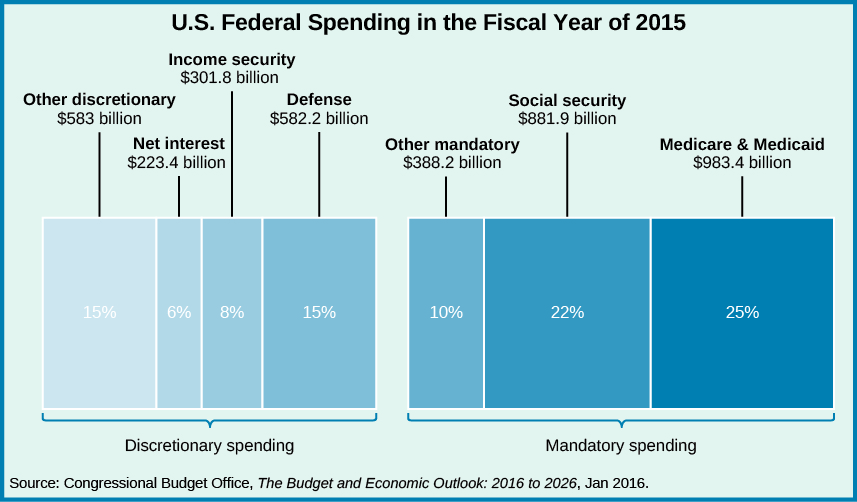| << Chapter < Page | Chapter >> Page > |

Congress is ultimately responsible for setting the formulas for mandatory payouts, but as we saw in the earlier discussion regarding Social Security, major reforms to entitlement formulas are difficult to enact. As a result, the size and growth of mandatory spending in future budgets are largely a function of previous legislation that set the formulas up in the first place. So long as supporters of particular programs can block changes to the formulas, funding will continue almost on autopilot. Keynesians support this mandatory spending, along with other elements of social welfare policy, because they help maintain a minimal level of consumption that should, in theory, prevent recessions from turning into depressions, which are more severe downturns.
Portions of the budget not devoted to mandatory spending are categorized as
discretionary spending because Congress must pass legislation to authorize money to be spent each year. About 50 percent of the approximately $1.2 trillion set aside for discretionary spending each year pays for most of the operations of government, including employee salaries and the maintenance of federal buildings. It also covers science and technology spending, foreign affairs initiatives, education spending, federally provided transportation costs, and many of the redistributive benefits most people in the United States have come to take for granted.

In theory, the amount of revenue raised by the national government should be equal to these expenses, but with the exception of a brief period from 1998 to 2000, that has not been the case. The economic recovery from the 2007–2009 recession, and budget control efforts implemented since then, have managed to cut the annual
deficit —the amount by which expenditures are greater than revenues—by more than half. However, the amount of money the U.S. government needed to borrow to pay its bills in 2016 was still in excess of $400 billion

Notification Switch
Would you like to follow the 'American government' conversation and receive update notifications?